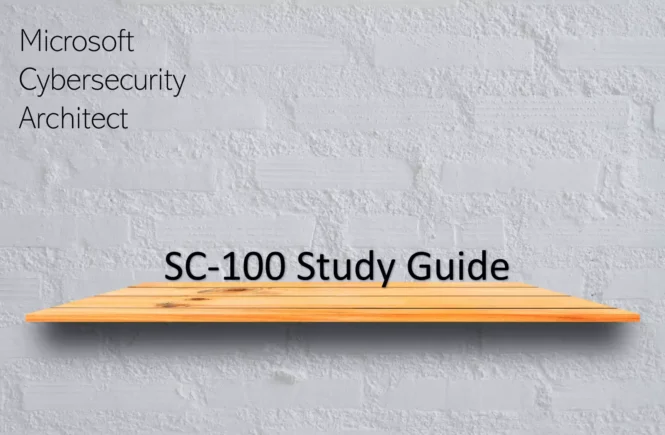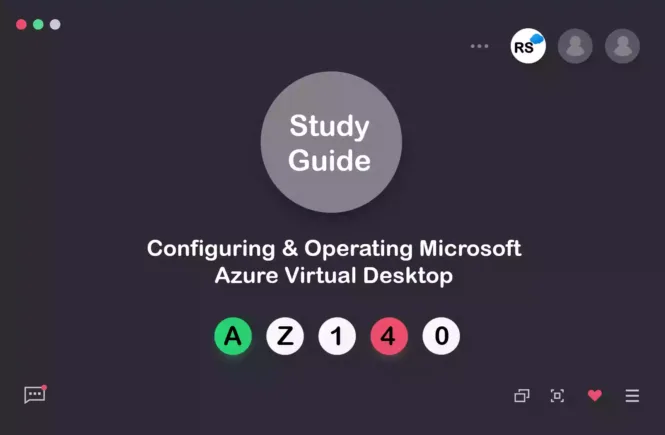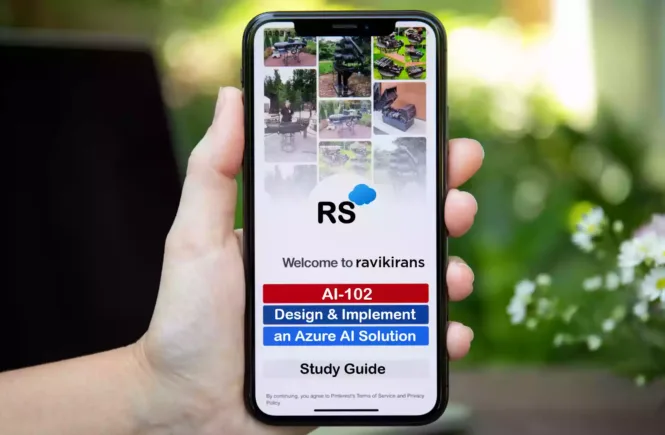SC-100 Preparation Details
Preparing for the SC-100 Microsoft Cybersecurity Architect exam? Don’t know where to start? This post is the SC-100 Certificate Study Guide (with links to each exam objective).
I have curated a list of articles from Microsoft documentation for each objective of the SC-100 exam. Please share the post within your circles so it helps them to prepare for the exam.
Exam Voucher for SC-100 with 1 Retake
Get 40% OFF with the combo
SC-100 Microsoft Cybersecurity Architect Course
| Udemy | Introduction to Cloud Security with Microsoft |
| Pluralsight | Managing Security Operations in Azure |
SC-100 Microsoft Cybersecurity Practice Test
| Whizlabs Exam Questions | Microsoft Security Analyst Practice Test |
| Udemy Practice Tests | Security Operations Analyst Test |
| Amazon e-book (PDF) | Microsoft Azure Security Infrastructure |
Looking for SC-100 Dumps? Read This!
Using sc-100 exam dumps can get you permanently banned from taking any future Microsoft certificate exam. Read the FAQ page for more information. However, I strongly suggest you validate your understanding with practice questions.
Check out all the other Azure certificate study guides
Full Disclosure: Some of the links in this post are affiliate links. I receive a commission when you purchase through them.
Design a Zero Trust strategy and architecture (30–35%)
Build an overall security strategy and architecture
Identify the integration points in architecture by using Microsoft Cybersecurity Reference Architecture (MCRA)
Microsoft cybersecurity reference architectures
Cybersecurity Reference Architecture: Security for a hybrid enterprise
Translate business goals into security requirements
How to organize your security team?
Translate security requirements into technical capabilities, including security services, security products, and security processes
Security technical capabilities in Azure
Design security for a resiliency strategy
Integrate a hybrid or multi-tenant environment into a security strategy
Develop a technical and governance strategy for traffic filtering and segmentation
Build a cloud governance strategy on Azure
Implement network segmentation patterns
Design a security operations strategy
Design a logging and auditing strategy to support security operations
Designing your Azure Monitor Logs deployment
Azure security logging and auditing
Develop security operations to support a hybrid or multi-cloud environment
Protect multi-cloud environments with Azure Security Center
Protect multi-cloud workloads with Azure security innovations
Hybrid security monitoring with Sentinel
Design a strategy for SIEM and SOAR
Azure Sentinel: Make your SIEM SOAR like an eagle
Evaluate security workflows
Workflow automation in Microsoft Defender for Cloud
Evaluate a security operations strategy for incident management lifecycle
Azure Security Benchmark V2: Incident response
Evaluate a security operations strategy for sharing technical threat intelligence
Microsoft Security Best Practices: Security operations
Microsoft uses threat intelligence to protect, detect, & respond to threats
Amazon link (affiliate)
Design an identity security strategy
Note: includes hybrid and multi-cloud
Design a strategy for access to cloud resources
Design your cloud strategy to maximize value on Azure
Identity and access management
Recommend an identity store (tenants, B2B, B2C, hybrid)
Recommend an authentication strategy
Recommend an authorization strategy
Design a strategy for conditional access
Design a strategy for role assignment and delegation
Design security strategy for privileged role access to infrastructure including identity-based firewall rules, Azure PIM
Design security strategy for privileged activities including PAM, entitlement management,
cloud tenant administration
Evaluate Governance Risk Compliance (GRC) technical strategies and security operations strategies (20–25%)
NOT: Information Protection or DLP
Design a regulatory compliance strategy
Interpret compliance requirements and translate into specific technical capabilities (new
or existing)
Evaluate infrastructure compliance by using Microsoft Defender for Cloud
Interpret compliance scores and recommend actions to resolve issues or improve security
Design implementation of Azure Policy
Design for data residency requirements
Translate privacy requirements into requirements for security solutions
Evaluate security posture and recommend technical strategies to manage risk
Evaluate security posture by using benchmarks (including Azure security benchmarks, ISO 2701, etc.)
Evaluate security posture by using Microsoft Defender for Cloud
Evaluate security posture by using Secure Scores
Evaluate security posture of cloud workloads
Design security for an Azure Landing Zone
Interpret technical threat intelligence and recommend risk mitigations
Recommend security capabilities or controls to mitigate identified risks
Design security for infrastructure (20–25%)
Design a strategy for securing server and client endpoints
Specify security baselines for server and client endpoints
Specify security requirements for servers, including multiple platforms and operating systems
Specify security requirements for mobile devices and clients, including endpoint protection, hardening, and configuration
Specify requirements to secure Active Directory Domain Services
Design a strategy to manage secrets, keys, and certificates
Design a strategy for secure remote access
Design a strategy for securing SaaS, PaaS, and IaaS services
Note: includes hybrid and multi-cloud
Specify security baselines for SaaS, PaaS, and IaaS services
Note to item writers: service configuration only, not in-product user security settings
Specify security requirements for IoT workloads
Specify security requirements for data workloads, including SQL, Azure SQL Database, Azure Synapse, and Azure Cosmos DB
Specify security requirements for web workloads, including Azure App Service
Specify security requirements for storage workloads, including Azure Storage
Specify security requirements for containers
Specify security requirements for container orchestration
Design a strategy for data and applications (20–25%)
Specify security requirements for applications
Specify priorities for mitigating threats to applications
Specify a security standard for onboarding a new application
Specify a security strategy for applications and APIs
Design a strategy for securing data
Specify priorities for mitigating threats to data
Design a strategy to identify and protect sensitive data
Specify an encryption standard for data at rest and in motion
This brings us to the end of the SC-100 Microsoft Cybersecurity Architect exam study guide.
What do you think? Let me know in the comments section if I have missed out on anything. Also, I love to hear from you how your SC-100 exam preparation is going on!
In case you are preparing for other Azure certification exams, check out the Azure study guide for those exams.
Follow Me to Receive Updates on SC-100 Exam
Want to be notified as soon as I post? Subscribe to the RSS feed / leave your email address in the subscribe section. Share the article to your social networks with the below links so it can benefit others.




